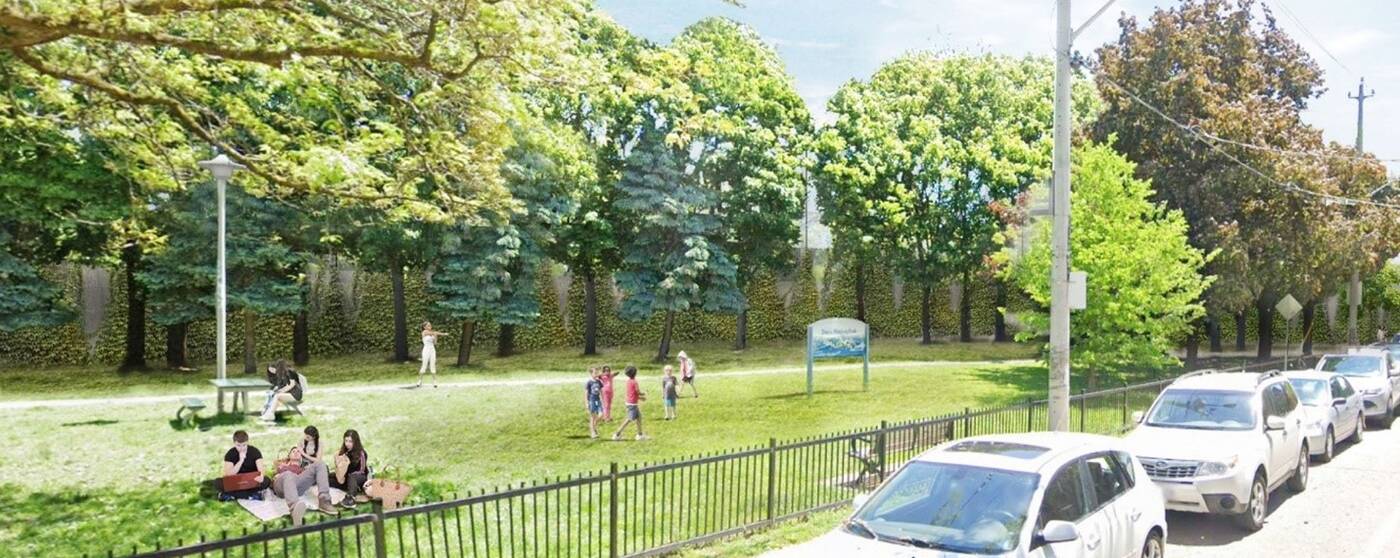
Toronto neighbourhoods getting tall noise walls to drown out Ontario Line trains
Building a new transit line through well-established city neighbourhoods is no simple job, requiring delicate care and often some compromise to balance the needs of a growing city against the concerns of quiet communities.
Metrolinx's new Ontario Line will carve through Toronto neighbourhoods like Riverside, South Riverdale, and Leslieville, with the stretch passing through these areas to run above ground on a joint GO-Ontario Line corridor.
Though the addition of new Ontario Line tracks will not require mass widening of the corridor — contrary to popular belief — the increase in train traffic poses noise concerns for the communities the line will pass through.
In a move that would probably upset the ghost of Ronald Reagan and please a more recent and controversial U.S. president, Metrolinx plans to address the issue with a series of new retaining walls, noise barriers, as well as underpass treatments and landscaping that will soften the line's impacts on area residents.
Due to the high visibility of these new neighbourhood features, area residents were given the opportunity to weigh in on the plans back in October, garnering almost 750 comments from the community.
Metrolinx reports that noise came out on top of the list of community concerns, with the protection of tree canopies, the introduction of new plants, and the lessening of visual and physical impacts of the new line all ranking high.
This feedback has shaped the design of these features, also being guided by data from a Metrolinx-conducted noise and vibration study.
One of the most prominent features coming to these neighbourhoods will be noise walls with minimum heights of five metres, designed to maintain or reduce existing noise levels even as new tracks and trains join the mix.
Residents of the affected hoods voiced their preference for noise walls with varying transparency depending on the area, results suggesting that translucent or opaque noise walls be installed in residential areas and barriers with higher transparency for parks and green spaces for maximum sunlight.
Another suggestion has residents calling for softening features like greenery and art installations for noise walls as well as retaining walls.
This feedback triggered follow-up studies by Metrolinx, which found that in Riverdale and Leslieville specifically, the existing solid, opaque sound walls offer little noise protection at heavy visual cost.
Community feedback is also shaping plans to improve corridor-adjacent parks and green spaces include enhancements like a new multi-use path for Jimmie Simpson Park. While construction would displace the Gerrard-Carlaw Parkette, a temporary alternative park will be set up nearby until the disruption is over.
The use of existing rail infrastructure dramatically reduces the cost of building a new line, but new rail bridges will still need to be constructed at Eastern Avenue, Queen Street, Dundas Street and Logan Avenue. Metrolinx has considered community feedback, and is now exploring integrating architectural lighting and murals into the bridges' underpasses.
Other plans to integrate the new line into neighbourhoods include the potential use of embankments and vertical green walls lined with evergreen and perennial plants, as well as walls with continuous bench seating in parks.

An example of a green wall along the rail embankment in a city park. Rendering by Metrolinx.
Area residents also asked for deciduous row and coniferous trees, with Metrolinx considering getting to work early on these plantings to get a head start on building up a dense canopy.
Crews have already begun clearing vegetation along the rail corridor, while the first construction on the Lakeshore East Joint Corridor is slated to start in mid-2022.
Metrolinx
Latest Videos
Latest Videos
Join the conversation Load comments







